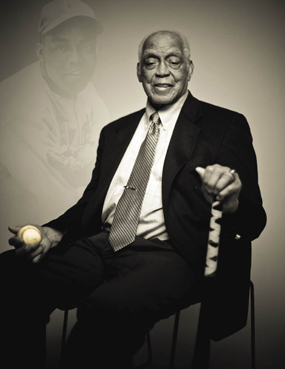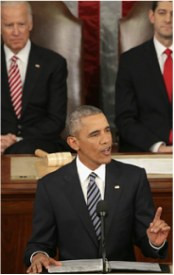|
I was thinking about Monte Irvin before the State of the Union speech. Irvin died Monday and my friend Ray Robinson, the writer, called me to commiserate.
Ray once wrote a story about Irvin visiting him at his home on Fire Island, dutifully hitting fly balls at the edge of the surf to young fans who knew a Hall of Famer was visiting. Irvin was always a gentleman. The early great black players were individuals: the activist Jackie Robinson, the lifer Roy Campanella, the energetic Willie Mays, the stoic Larry Doby. Monte Irvin was a centrist, a veteran of the Negro Leagues, who played in Newark, across the river, while lesser players were performing in Brooklyn, Harlem, the Bronx. When he got his chance, Irvin had eight seasons to show the great player he was. Later, he was brought into the Commissioner’s office, perhaps as a gesture, perhaps to offer real counsel. Either way, he was available, to talk about the past, to talk about the present. Some reporters were lucky enough to spend time with him around ball parks and hotel lobbies. He was a link; he was a guide. (The National Football League did somewhat the same with Buddy Young, the splendid little running back, a pioneer black star right after the War. What a treat to sit around an otherwise tedious summer camp and talk about Illinois and the New York Yankees football team.) A personal note about Monte Irvin: in the mid-‘60’s the baseball writers held a summer outing at Bear Mountain, including a hardball game. I was playing left field, and Monte Irvin, long retired, lofted one so far over my head that I think it landed in the Hudson River. Monte was always available for history and opinions. Around 2009, I called him for my Stan Musial book (he thought Musial was a positive force in those days) and I reminded him of the shot he hit at Bear Mountain. Not surprisingly, I recalled it more than he did. He, after all, had tagged Warren Spahn and Robin Roberts much the same way. I thought about Monte Irvin again during the State of the Union speech, as President Obama made a passionate call for Americans to somehow dig back to their better selves. At the end, I saw some black members of Congress near the exit – Rep. Sheila Jackson Lee from Jamaica High School and Yale and now Houston, always there for his autograph. I saw the sheer pride emanating from them, but that is also how we feel about him and Michelle Obama, with the pride of family members. When the President casually offered to give some tips about Iowa to current candidates, my wife and I whooped it up. Oh, right. He won two elections, come to think of it. We look forward to the Obamas maintaining a standard of dignity and thoughtfulness over the decades. The president’s speech soared like Monte Irvin’s home run. * * * LOVELY CODA TO THIS POST: (Jon Leonoudakis, who made the recent documentary on Arnold Hano, another grand old writer, displays the bond among Hano, Ray Robinson and Monte Irvin:) From Jon Leonoudakis: After I heard the sad news of the passing of Monte Irvin, it struck me there was a wonderful story to share about him that is largely unknown. Ray Robinson and Monte were good friends, and in the summer of 1963, Ray invited Monte and his wife, Dee, to join Arnold Hano, his wife, Bonnie and their nine-year-old daughter, Laurel, at their place on Fire Island for a weekend. When the kids in Ray’s neighborhood learned Monte Irvin was staying there, they begged him to come out and play ball with them. Remarkably, Arnold Hano had his 16mm film camera with him and captured Monte playing with the kids. It is a very sweet story and I’ll be sharing it with the world later today. Click on the link above. When I first saw the footage while making the Hano documentary, I asked Arnold, “Who’s the black guy in the Sports Illustrated T-shirt?”. The reply via e-mail: “Monte Irvin.” I nearly fell out of my chair! I then set about interviewing Arnold and Ray about their recollections of that weekend. It wasn’t something I could fit into the body of the film, but I hoped there would be an outlet for it at some point. Rest in peace, Monte Irvin. https://vimeo.com/151695231 * * * Ray Robinson’s 1984 article about the day Monte Irvin visited him at the beach: http://www.nytimes.com/1984/02/26/sports/a-man-of-purpose-leaves-baseball.html 1/13/2016 10:33:04 am
Here is a bonus Monte Irvin story. You may recall that Commissioner Bowie Kuhn got a lot of criticism for not being in Atlanta when Hank Aaron broke Babe Ruth's lifetime home run record in 1974. Instead, he sent his aide, Monte. Monte and Dee packed a week's worth of clothing (no telling, right?), and checked into an Atlanta hotel, then went to the ballpark. When Hank homered, Monte was on the field on behalf of the Commissioner, and boos were loud and long. Hank said to him, "It's okay Monte, don't take it personally." The homer, as it happened, came in Hank's first swing in that first game….so Monte made his presentation, said his remarks, turned to his wife Dee and said, "I think we can make the 9:30 flight back to Newark." And they did! His "week in Atlanta" was 5 hours. 1/13/2016 01:24:42 pm
Another Monte memory: After Barack Obama was elected president in 2008, I asked Monte if he ever thought he'd live to see a black president. He said, "I actually did….but the order surprised me….I thought there would be a Jewish president first."
George Vecsey
1/13/2016 01:28:52 pm
He shouldn't have departed. Things getting interesting. GV
Elliott Kolker
1/13/2016 07:08:18 pm
I began this poem last May, when the Giants were playing the Astros in Houston, where former Giant Monte Irvin lived; at ninety-six years young the second-oldest Hall-of-Famer. The Front-Office Brass presented Monte with his own World Series Ring and also invited him to join the team when they visited the White House later that summer. Few who saw the footage of Monte and his protege, Willie meeting Obama could miss the President's sincere admiration for two true pioneers,
Ed Martin
1/14/2016 10:46:55 am
Terrific article, GV and terrific comments. The 90s guys have a few years on me, but I had the pleasure of seeing them all play, on the great Brooklyn Dodger teams and against them. And at the same time, Charlie Parker, Dizzy Gillespie, Bii "Count" Basie and so many more who played at the mini stadia near Times Square.
Joshua Rubin
1/14/2016 11:31:23 am
Ed, as a relative youngster on this blog, I envy you for having seen Bird and Diz in their prime (alas, I am too young, even, to have seen Coltrane). I saw Diz a few times in the 80s -- past his prime and not innovating, but a better representation of his art than, say, Oldtimer's Day at Shea was of baseball.
George Vecsey
1/14/2016 11:49:06 am
I saw FDR in an open car in the rain in 1944 in Queens....and Norman Thomas spoke at Hofstra in the late '50s.....(When he spoke, lightning hit nearby; he thought that was cool).....GV
Stephen Hano
1/18/2016 03:26:36 pm
I heard Norman Thomas speak in San Francisco in 1964 - He was endorsing LBJ for President. I believed he lived long enough to regret it. 1/14/2016 08:41:03 pm
Ed-I’m with you having enjoyed seeing all those great’s play. We are both behind them in age, but not by much.
Elliott Kolker
1/15/2016 12:29:58 am
Alan, 1/15/2016 07:07:05 am
Elliot--thanks for the correction. In a way I'm glad that I had it wrong. Otherwise, I would have never received Josh's kind call years later. Comments are closed.
|
Categories
All
|











